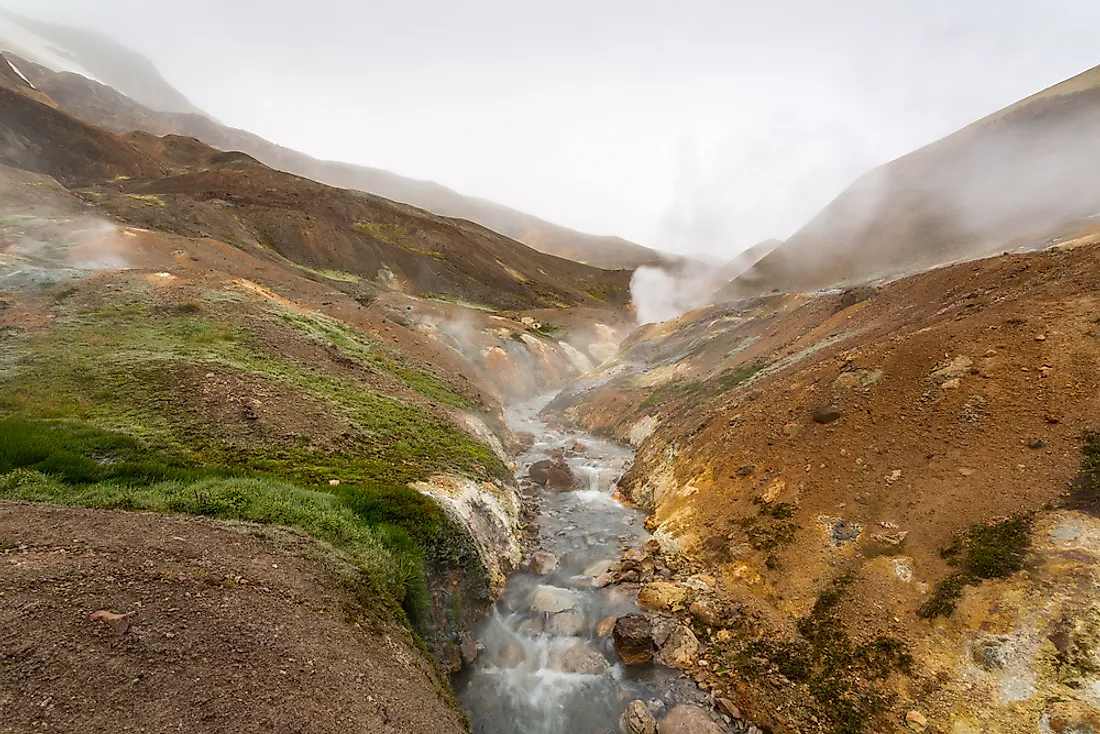Volcanic Landforms: What Is A Tuya?

A tuya is a term used to describe volcanic mountains which are characterized by flat-tops and extremely steep slopes. Tuyas are formed as a result of a subglacial volcanic eruption where the cold glaciers cause the lava to cool quickly. The term “Tuya” was first used in the context of the volcanic features by a Canadian geologist Bill Matthews who, in 1947, wrote a publication entitled, “Tuyas, Flat-topped Volcanoes of British Columbia.” The geologist was inspired by these volcanic features which are many in the northern region of British Columbia in Canada. It was from one tuya, in particular, Tuya Butte which is one of the best examples of tuyas in the world, that the volcanic features derive their name and is universally used as the standard. The word “Tuya” is believed to have originated from the Tahltan language, the native language spoken in northern British Columbia where the tuyas are found.
Tuyas In Antarctica
Antarctica’s cold temperatures make the formation of glaciers possible. These glaciers are crucial in the formation of tuyas, and hence it is not surprising that Antarctica is home to several tuyas. One such tuya is the Brown Buff. It is a basalt mountain situated on the Tabarin Peninsula in northern Antarctica. The tuya was formed about one million years ago as a result of the subglacial eruption of a pre historic englacial lake. Brown Buff is famed for its steep brown-colored slopes. Another tuya found in Antarctica is the Dobson Dome which is situated in the region of James Ross Island between Croft Bay and Rohss Bay. Dobson Dome is a tuya which rises 3,120 feet above sea level, and its snow-capped peak is among the highest points of James Ross Island. Located in the southernmost part of Dundee Island is Cape Purvis whose topographical characteristics are those of a tuya.
Tuyas In North America
The tuyas of North America are only found in the continent’s two northernmost countries of Canada and the United States. The most famous of the tuyas is arguably Canada’s Tuya Butte, the volcanic feature from which tuyas derive their name and the first tuya to be studied geologically. Tuya Butte is part of the Tuya Range of mountains situated in the northern region of British Columbia. Tuya Butte rises 5,528 feet above sea level with a prominence of 1,165 feet. Another tuya found in British Columbia, Canada is The Table. It is among the mountains which make up the Garibaldi Ranges and is distinct from surrounding mountains due to its exceptionally steep slopes. One of the highest tuyas in the United States is Hogg Rock which has an elevation of over 5,080 feet. Hogg Rock is situated in northern Oregon and is a constituent of the Cascade Ranges. Another tuya located in the United States is Hayrick Butte which is located in northern part of Oregon.
Tuyas In Europe
In Europe, all the tuyas are located in the north of the continent particularly in Russia as well as Iceland. One of Europe’s tuyas is Heroubreio which is located in northern Iceland. Heroubreio, with an elevation of 5,518 ft, is also one of the highest tuyas in Europe. Another tuya found in Europe is Burfell, a 1,570-ft mountain situated in southern Iceland. The Azas Plateau in Russia is also home to numerous tuyas including Shivit-Taiga and Ulug-Arginskii among many others.











